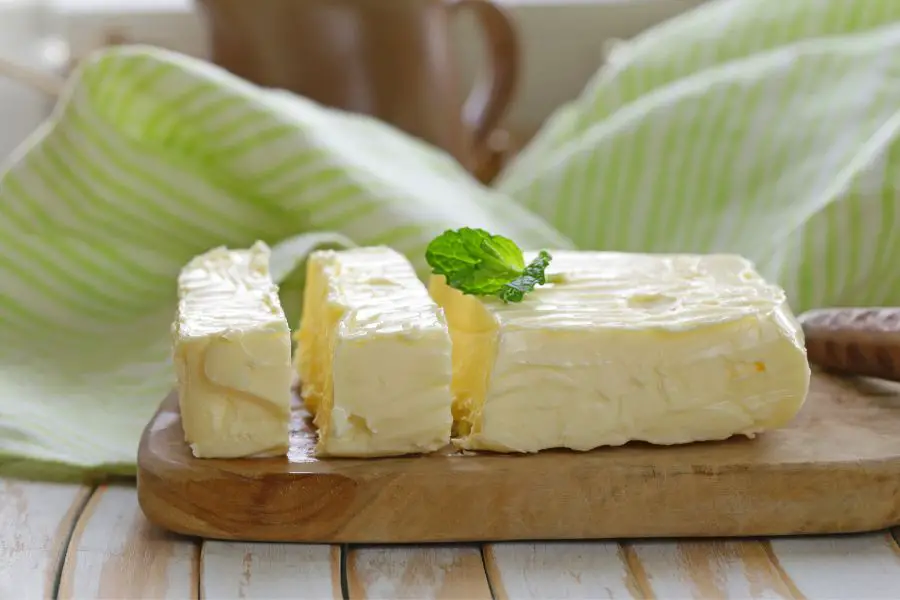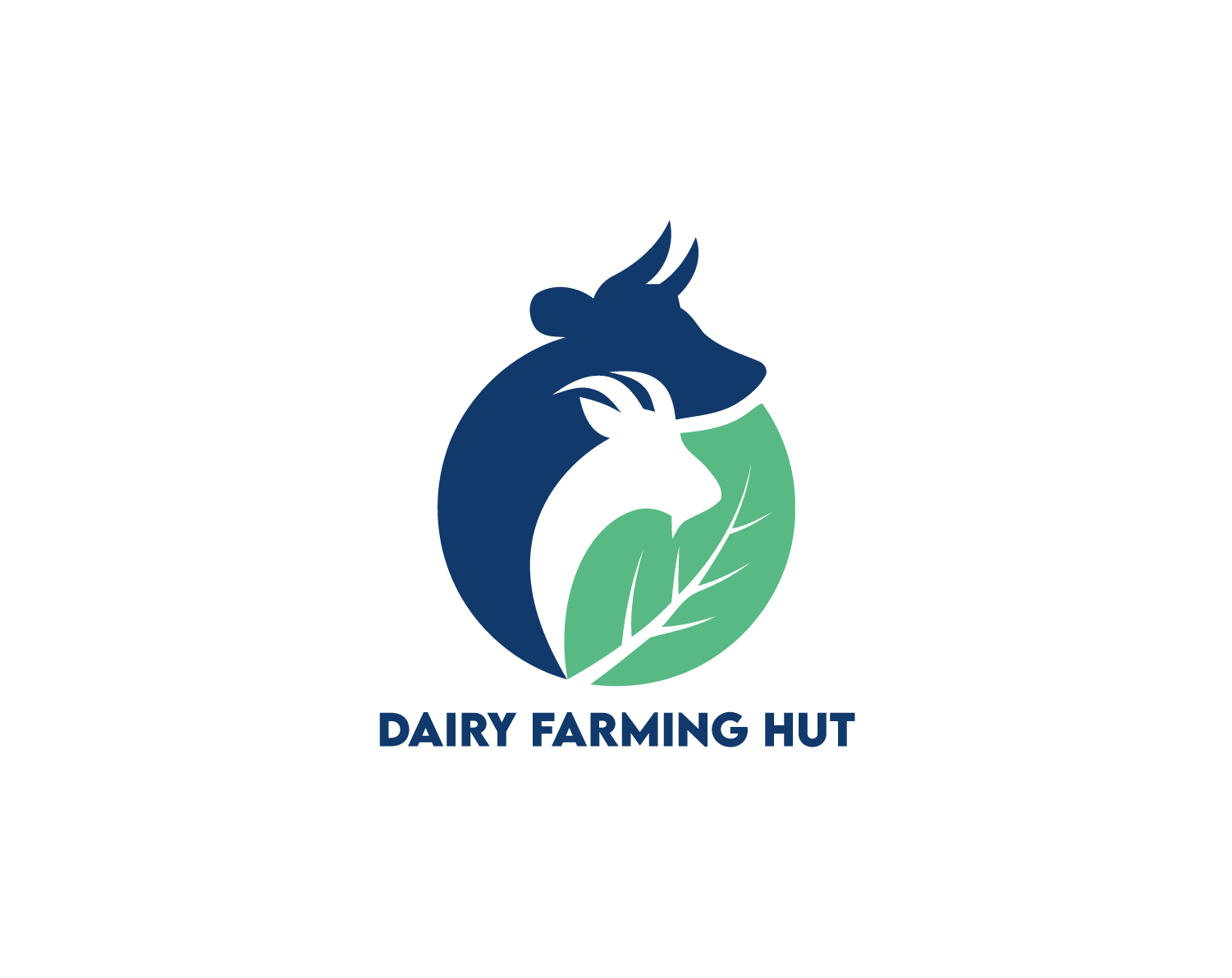Butter is a staple ingredient in many popular dishes, but very few recipes specify that you should use goat or sheep butter. Yet there are many benefits to using these alternatives to cow’s milk butter. But what are the differences between goat and sheep butter? What makes each unique?
Goat butter and sheep butter have distinct tastes, with sheep butter tasting sweeter and goat butter tangier. The manufacturing process is similar, with little difference in fat content and nutritional value. But sheep butter has more lactic acid (AHA), which helps fight the signs of aging.
Though goat butter and sheep butter are similar in many ways, there are distinct differences that make many people (including dairy farmers) prefer one over the other. Let’s compare the two types of butter in more detail.
The Taste Of Goat And Sheep Butter

The most significant, not to mention the most obvious, difference between goat butter and sheep butter is in taste. Many people are familiar with the distinct flavor that goat milk has, as numerous people have tried it, either out of curiosity or because they wanted an alternative to cow’s milk.
Goat Butter Taste
The taste of goat’s milk shocks most people, as it’s tangier and grassier than cow’s milk, with a more distinctly wild taste. This taste comes from the high levels of short-chain fatty acids in goat’s milk. The same applies to goat butter. The short-chain fatty acids give goat butter a distinctly acidic taste that many people either love or hate. The flavor is distinctly earthy and grassy.
As with cow butter, the taste will differ slightly depending on the type of goat the milk comes from and the diet the farmers feed them. A diet of mainly grass will tone down the taste a bit, while more weeds and wild plants tend to make the butter even tangier.
Because of its strong flavor, you must take care when using goat butter in cooking. You may want to use lower quantities than you would have with cow butter to keep the taste from overwhelming the meal’s flavor. Despite this, goat butter is immensely popular in many cuisines, especially French cuisine, specifically meals like quiches or tarte tatin (a type of apple tart).
I would suggest watching this video on how to make delicious goat butter.
Sheep Butter Taste
Sheep butter tastes a little bit more like cow butter in a way, but with a more potent flavor. It tastes distinctly buttery but with rich, sweet undertones. Some people describe it as “the same as cow butter, but more complex,” almost like the difference between cream and double cream.
This makes sheep butter more popular with many people if they can get their hands on some since it’s not quite as common as goat butter (which can also make it more expensive). Its flavor is much easier to get used to than goat butter.
Its rich, buttery taste makes sheep butter popular in meals, too, though in a more conventional way than goat butter. French cuisine incorporates sheep butter in dishes like ratatouille and cassoulet.
Nutritional Value Of Goat Butter Vs. Sheep Butter
Nutritionally speaking, there aren’t very significant differences between sheep and goat butter. They are both healthier options than cow butter, for the most part, especially for people who are lactose intolerant since both options have lower lactose levels.
Here’s a summary of the approximate nutritional differences based on 14 grams (more or less 0.5 ounces) of goat and sheep butter:
Header | Goat Butter | Sheep Butter |
|---|---|---|
Calories | 110.04 | 99.96 |
Vitamin C | 0 mg | 4.8 mg |
Iron | 0 mg | 1.44 mg |
Sodium | 40.04 mg | 25.06 mg |
Protein | 0 g | 1 g |
Fat | 12 g | 11 g |
Saturated Fatty Acids | 8 g | 7 g |
Cholesterol | 40.04 mg | 35 mg |
As we can see, the differences in nutritional value between sheep and goat butter are so low as to be negligible. However, sheep milk contains slightly more lactose than goat milk, so for lactose intolerant people, goat butter is a much safer option than sheep butter, which is also one of the reasons why goat butter is the more common of the two.
In general, the aspect that makes most people consider goat butter the healthiest option of the three butter types is that it contains less fat and has lower levels of lactose, which means that the human body can more easily digest it. This ensures that weight gain isn’t as typical with goat butter, and it’s safer for people with lactose intolerance and milk allergies.
Is Goat And Sheep Butter As Nutritious As The Milk They’re Made Of?
People tend to think that, because of certain health benefits of sheep and goat milk, their butter is naturally nutritious. This is not necessarily the case, though.
First, we must note that the pasteurization process that any type of milk goes through to kill harmful bacteria also destroys some of the nutrients, so the milk isn’t even as nutritious as it was when it was still fresh. The process is necessary, though; many dairy farmers add supplements to the milk after pasteurization to replenish the nutrient value.
However, even more of the nutrients are destroyed or removed during the butter-making process. So, even though we saw that goat and sheep butter contain valuable nutrients, they are not exceptionally nutritious.
Which Is Healthier, Sheep Butter Or Goat Butter?
As we’ve mentioned, many of the nutrients get lost during the butter-making process, but the best way to compare the health value of goat and sheep butter is to examine the milk they are made of. In a side-by-side comparison, we can see:
- Sheep milk has 60% more protein than goat milk.
- Sheep milk contains all ten essential amino acids the human body needs, while goat milk contains six.
- Sheep milk does not contain A1 protein, which is a leading contributor to the development of type 1 diabetes. Goat milk contains trace amounts of protein A1.
- Sheep milk has higher levels of good fats like Omega 3 and 6 than goat milk.
- Sheep milk contains slightly more natural vitamins and minerals than goat milk.
- Goat milk has higher levels of oligosaccharides, an important prebiotic also present in human milk.
- Goat milk contains 30 to 35% medium-chain fatty acids, making it a quick energy source without causing weight gain.
- Goat milk contains less lactose and fewer sugars in general than sheep milk, making it safer than sheep milk for people who can’t tolerate cow’s milk.
To re-emphasize, many of these factors are significantly reduced during the butter-making process. Butter is naturally not as nutritious as the milk it’s made of, and the high levels of fat content (even if it’s primarily good fat) means that moderation is crucial for healthy living.
Manufacturing Processes Of Goat And Sheep Butter
The manufacturing processes for goat and sheep butter are nearly identical and also similar to the process of manufacturing cow butter. Dairy farmers follow this basic procedure:
- After milking, while the milk is still fresh, the milk is tested and pasteurized. There is no reason to homogenize either goat or sheep milk since they are both naturally homogenized; the cream does not separate naturally, so there’s no need to emulsify the fat droplets in the milk.
- The milk is pumped into a separator mechanism that uses centrifugal force to separate the cream from the milk.
- The cream is then sent into a butter churn that changes its consistency by agitating it, causing the fat droplets to clot together and form flakes.
- During the churning process, lactic acid bacteria thicken the cream and turn it into butter.
- In the next step, the butter is washed to remove any remaining milk solids, as these could cause the butter to spoil more quickly.
- Now salt is added to the butter, which accentuates its flavor and helps to preserve it. Goat and sheep butter may require less salt than cow butter.
- The butter is then packaged, cooled, and sent for further processing to turn it into different types of butter for spreading, cooking, etc.
Where Goat And Sheep Butter Production Differs From Cow Butter?
As we’ve seen, the processes are identical between the two and very similar to cow butter production, but there are a few differences:
- Sheep and goat milk producers aren’t as common as dairy farms that produce cow’s milk. This means there isn’t as much milk, so there’s less butter production.
- Goats and sheep don’t produce as much milk as cows since they are smaller animals, further reducing the amount of butter that can be manufactured.
- Goat’s milk and sheep’s milk have lower fat content than cow’s milk, which means that the same amount of milk will produce less butter than the equivalent amount of cow’s milk.
These factors contribute to the higher price of goat and sheep butter.
Environmental Impact
One aspect of butter production that people often forget is the environmental impact, and this is tied directly to the factors of the animals’ sizes and feeding habits.
Cows are larger than goats and sheep, and goats are the smallest of the three animals. Goats are also less fussy about what they eat than sheep or cows, so that goats can flourish on smaller farms with worse land.
Consequently, goat and sheep butter are better for the environment than cow butter, but goat butter has the most negligible negative impact of the three.
Final Verdict
When it comes to comparing goat and sheep butter, there are several factors to consider. Both types of butter have their pros and cons, but one common drawback is that they can be expensive and difficult to find due to their scarcity. Despite having a lower nutritional value than sheep butter, goat butter has an advantage in that it is a safer option for people who are allergic to cow's milk. However, it is worth noting that some people may find the taste of goat butter less appealing than sheep butter.
